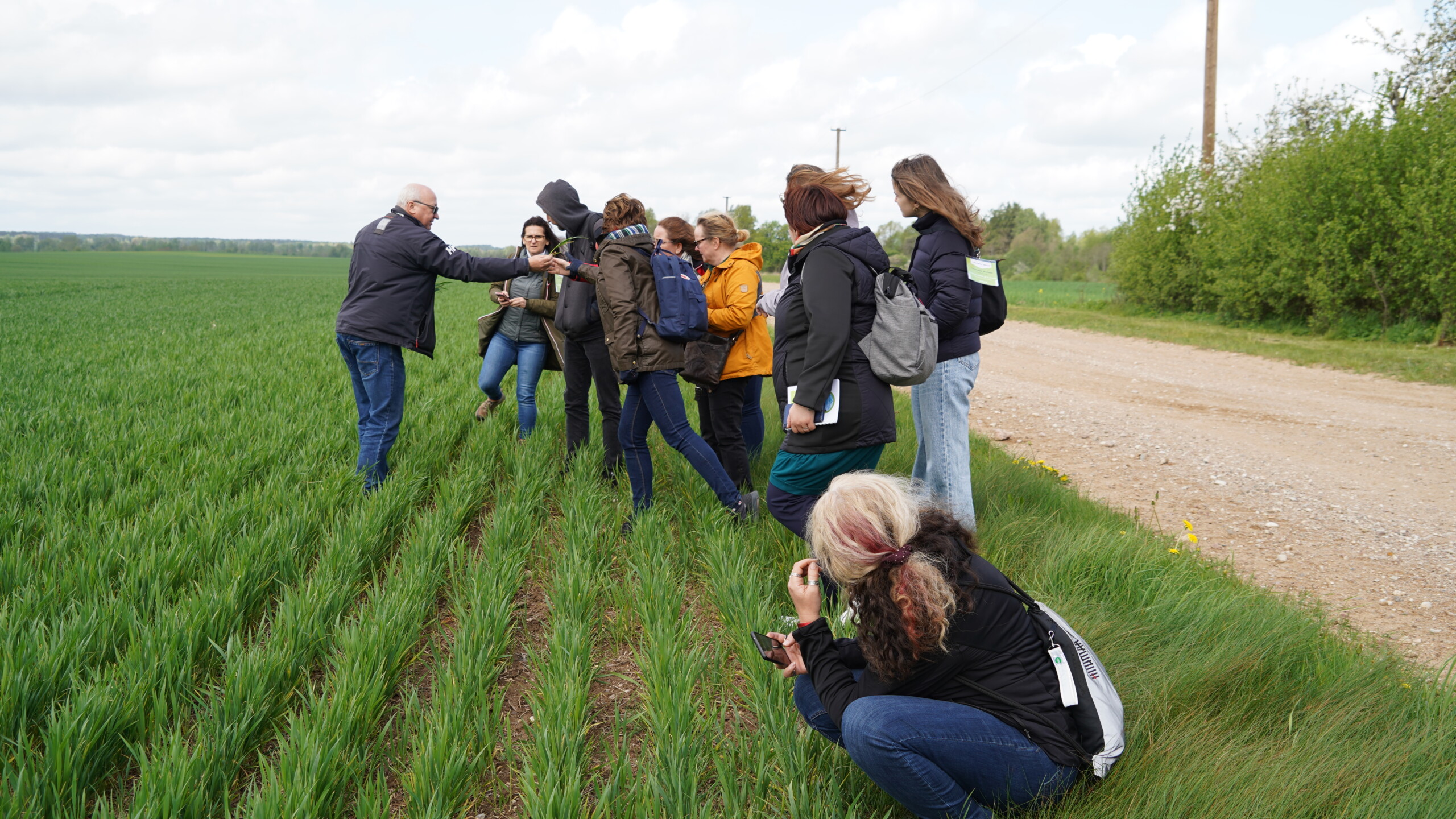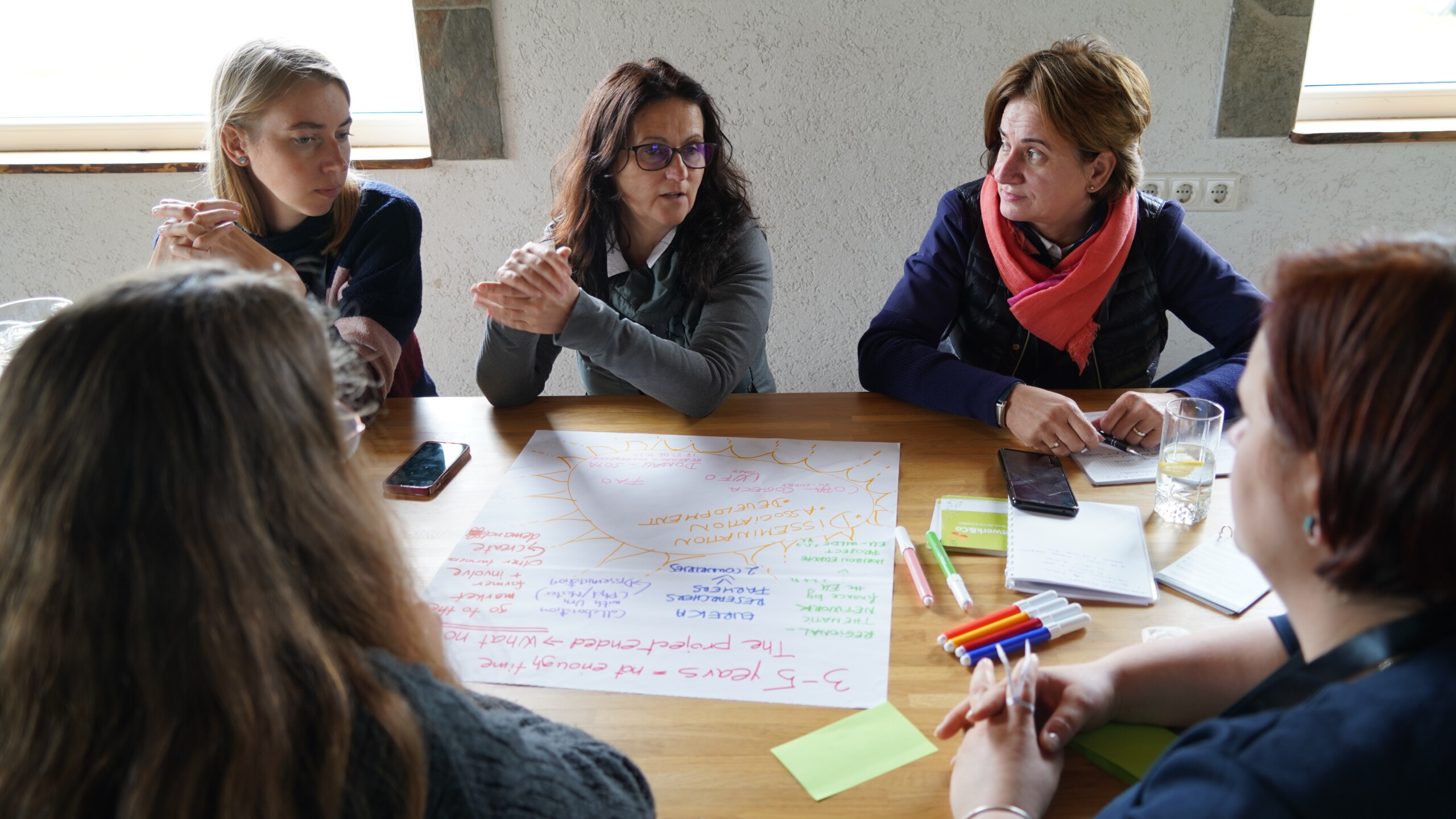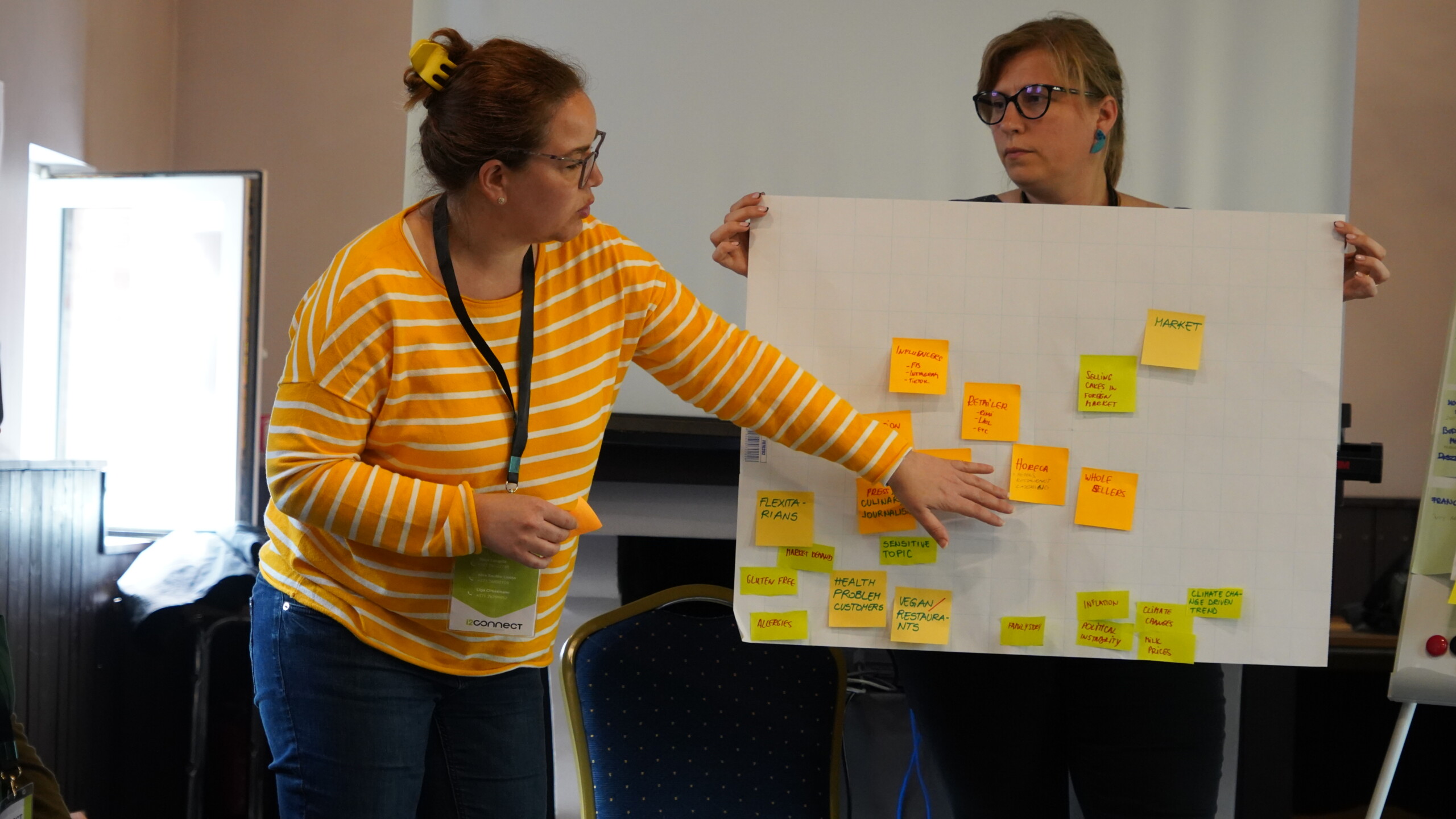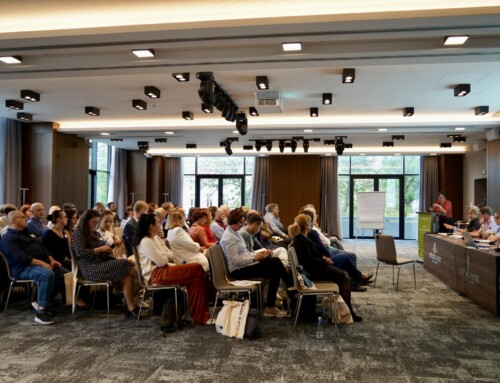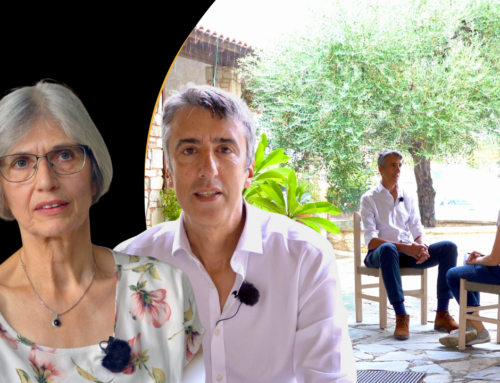Gegužės viduryje 18 dalyvių iš Bulgarijos, Estija, Suomija, Graikija, Vengrija, Lietuva, Portugalija, Slovėnija, ir Šveicarija atvyksta į Latviją dalyvauti Latvijos kaimo konsultavimo ir mokymo centro organizuojamame kryžminiame vizite. (LRATC). Ką tiksliai reiškia kryžminis apsilankymas, ir kuo tai skiriasi nuo keitimosi patirtimi? Žinoma, Tačiau šio atvejo dalyviai taip pat dalijasi savo patirtimi ir aktyviai diskutuoja, kryžminio vizito idėja yra ta, kad šio vizito metu, dalyviai sustiprina mokymų metu įgytas žinias apie interaktyvius inovacijų metodus. Tai reiškia, kad lankantis įvairiuose projektuose, dalyviai susidėjo galvas, kad pagalvotų apie įdomius esamų iššūkių sprendimus pateiktose iniciatyvose.
Šeimininkas, LRATC yra didžiausia kaimo konsultacinė organizacija Latvijoje, teikianti paramą, gaires, ir mokymus ūkininkams, kaimo verslininkai, ir kiti asmenys, dalyvaujantys kaimo plėtroje Latvijoje. Šiuo metu LRATC dirba maždaug 430 darbuotojų, kurie dirba visoje šalyje 26 filialuose ir centriniame biure, esančiame Ozolniekuose. O dabar trumpai apie Latvijos žemės ūkį.
JĖLIAI
Pagrindinės Latvijoje auginamos žemės ūkio kultūros yra grūdai, tokie kaip kviečiai, miežių, avižos, ir rugių. Kiti svarbūs augalai yra bulvės, rapsų, ir įvairių daržovių. Latvija taip pat garsėja aukštos kokybės ekologiniu ūkininkavimu ir ekologiškų augalų auginimu.
GYVŪNAI
Gyvulininkystė yra esminė Latvijos žemės ūkio sektoriaus dalis. Pieno ūkis yra ypač ryškus, Latvijos pieno produktai yra gerai vertinami. Kiti šalyje auginami gyvuliai – kiaulės, paukštiena, avis, ir galvijai.
KAIMO PLĖTRA
Latvijos vyriausybė daug dėmesio skiria kaimo plėtrai, siekiant remti tvarų žemės ūkį, pagerinti infrastruktūrą, ir skatinti inovacijas šiame sektoriuje. Ūkininkams remiamos finansavimo programos ir subsidijos, padidinti produktyvumą, ir saugoti aplinką.
ŽEMĖS ŪKIO IŠŠŪKIAI
Kaip ir daugelis šalių, Latvija savo žemės ūkio sektoriuje susiduria su įvairiais iššūkiais. Šie iššūkiai apima senėjančią ūkių populiaciją (vidutinis ūkininko amžius yra 57 metų), ūkio konsolidavimas, darbo jėgos trūkumas (7.2 % darbo jėgos dirba žemės ūkyje), klimato kaitos poveikis, ir prisitaikymas prie ES reglamentų ir rinkos poreikių.
Kryžminio vizito Latvijoje metu, keturi atvejai buvo aplankyti ir išsamiai išanalizuoti naudojant i2connect metodai:
- INOVATYVIŲ KOMPONENTŲ KŪRIMAS IR GAMYBA PATATUOSE (TORTAI)
Projekto tikslas buvo sukurti naujus maisto produktus ir naujus receptus naudojant specifines bulvių veisles. Taip sukuriama nauja bendro žemės ūkio produkto realizacija – bulvę. Naujų produktų poreikis (pyragaičiai) – sveikesnis produktas galėtų skatinti visuomenės sveikatą ir konditerijos gaminių įvairinimą, atsižvelgiant į naujas rinkos tendencijas ir poreikius
visuomenės. Projektas rodo, kad galima išgauti dar platesnį klasikinio gaminio pritaikymą, kuris naudojamas labai paprastais būdais, tuo tarpu plečiant ir pirminės gamybos produkto rinką.
Šeimininkas, Linda Šarke-Fedjaeva, LRATC: “Projekto metu buvo išbandytos kelios bulvių veislės, ir daugiau nei 70 buvo sukurti pyragų receptai, kurių pagrindinis ingredientas yra bulvės! Vedėjas Juris Goldmanis atsinešė du bulvinius pyragus – šokolado/apelsinų ir spanguolių. Idėja kurti pyragus naudojant bulves kilo iš noro pakeisti pieno produktų naudojimą gamyboje, kaip vartotojų bazė su glitimu, laktozės, ir didėja įvairūs mitybos ir gyvenimo būdo apribojimai. Tačiau, reikia nepamiršti, kad vien todėl, kad produktas yra veganiškas arba be glitimo, arba be laktozės nereiškia, kad jis netinka žmonėms, kurie gali valgyti viską! Taip nėra! Turiu pripažinti, kad spanguolių bulvių pyragas buvo mano mėgstamiausias. Šiuo metu, didžiausias iššūkis šeimininkui – užkariauti rinką savo novatorišku produktu. Juris tai užsiminė “Inesės pyragaičiai” bulvinių pyragų jau galima įsigyti Stockmann ir didžiosiose Rimi parduotuvėse. Jis tikisi, kad netrukus pyragaičiai užkariaus ir kaimynines rinkas, kuriose veganiškas gyvenimo būdas populiaresnis nei pas mus. Renginio dalyvių grupė atliko tinklo analizę, siekdama nustatyti trūkstamus ir galimus bendradarbiavimo kanalus bei būdus, kaip reklamuoti produktą rinkoje.. Reikia pasakyti, kad tikras posakis yra – vienas žmogus negali visko! Nesvarstytume šio projekto, jei jame nedalyvautų bulves auginantis ūkininkas, mokslininkai ir patarėjai, kurie dirbo renkantis tinkamiausias bulvių veisles ir kuriant receptus, kurie būtų ne tik skanūs, bet ir tinkami komercializuoti.“ - NAUJOS TECHNOLOGIJOS IR EKONOMIŠKAI GYVENTOS SPRENDIMAI VIETINIAI PAŠARAI KIAULIŲ GAMYBAI: GENETIŠKAI NEMODIFIKUOTŲ SOJŲ IR NAUJŲ MIIEŽIŲ VEISLIŲ AUGINIMAS LATVIJOJE
Sojų pupelių valgis yra pranašesnis baltymų šaltinis sudėtiniuose pašaruose dėl didelio baltymų kiekio ir aminorūgščių sudėties, Tačiau ES labai priklauso nuo augalų baltymų importo, su sojos importu, skirtu pašarų dominavimui. Latvija taip pat importuoja nemažą kiekį sojų pupelių patiekalo, kuris yra artimas viso vietinių baltymų augalų gamybai. Dėl galimo ekonominės naudos ūkininkams ir gyvūnų pašarų gamintojams, taip pat daugybė aplinkos ir klimato pranašumų, yra politinė parama baltyminių augalų auginimo plėtrai ES (ES augalų baltymų planas, ir kt.).
Tuo pačiu metu, vietinės sojų tiekimo grandinės plėtra labai priklauso nuo Latvijoje užaugintų sojų konkurencingumo. Taigi, tai buvo pagrindinis projekto iniciatoriaus iššūkis – išbandyti, ar įmanoma užauginti ir surinkti pakankamai geros kokybės sojų, kad būtų sutrumpintos esamos tiekimo grandinės ir būtų galima naudoti vietinius produktus gyvulių pašarų gamyboje.. Kadangi sojų auginimas Latvijoje nėra įprastas ir trūksta informacijos apie tinkamiausias sojų veisles, Atrodė, kad projektas yra saugi aplinka, skirta pagilinti žinias apie sojų pupelių auginimo apribojimus ir galimybes. Tačiau projektas skirtas ne tik sojų pupelių auginimui pašarams, bet ir naujų miežių veislių, kurios galėtų būti naudojamos pašarų gamybai.. Iniciatorius – ūkininkas iš pietinės Latvijos dalies, turintis kiaulių fermą, sugalvojo savo ūkyje pradėti auginti sojų pupeles. Jis norėjo užsiauginti savo sojų pupeles ir gaminti pašarus kiaulėms, kad sutrumpintų tiekimo grandinę ir sumažintų priklausomybę nuo besikeičiančių sojų rinkos kainų.. Kadangi jis jau savo ūkyje daugiausia naudojo sojų baltymus kiaulių pašarams ir žinojo, kad sojų baltymus sunku pakeisti kitais baltyminiais augalais, jis įžvelgė didelį potencialą plėtojant šią idėją projekto paraiškoje. Pasitaręs su savo patarėju, projekto idėja pradėjo augti projekto paraiškoje. Patarėjas pasinaudojo savo bendradarbiavimo tinklu ir pritraukė daugiau entuziastų dalyvauti projekte.
Šeimininkas, Linda Šarke-Fedjaeva, LRATC: “ZS Rubuļi kartu su 13 kiti bendradarbiavimo partneriai EIP projekto rėmuose ieškojo geriausios sojų pupelių veislės, kurių baltymų kiekis ne mažesnis nei importuotų. ZS Rubuļi savo ūkyje augina kiaules ir šešias skirtingas kultūras, kuri driekiasi aplink 1000 hektarų Saldus savivaldybėje. Po pokalbio su savininku, Sergejus, ir agronomas Aigaras, aišku, kad Sergejus yra ryžtingiausias ir entuziastingiausias iš jųdviejų. Tai puikus ūkininkų iniciatyvos pavyzdys, kur savininkas atvirai pripažįsta, kad projekto grupės ūkininkų rezultatai skiriasi – kai kuriems pasisekė labiau, kiti mažiau. Kai kurie tęsia eksperimentus, o kiti pasidavė. Pats Sergejus toliau augina sojas Rubuliuose net ir pasibaigus projektui, ir jis teigia, kad pasėtos ir nuimtos sojos gali išmaitinti visą ūkio kiaulių populiaciją. Pažymėtina, kad Sergejus sugeba atlikti visą sojų pupelių perdirbimo ciklą, nuo džiovinimo iki gatavų pašarų gyvuliams gamybos, ūkyje. Nustebau sužinojusi, kad sojų aliejuje yra vertingų maistinių medžiagų ir jis gali būti naudojamas maistui. Aš ir kiti kryžminio vizito dalyviai savo eksperimentuose rems Rubulių šeimą! Tęskite puikų darbą!“ - UŽ KLIMATĄ ATSAKINGAS ŽEMĖS ŪKIS LATVIJAI
Dirvožemis yra didžiausios antžeminės anglies saugyklos Žemėje. Tačiau, žemės naudojimo keitimas ir dirvožemio įdirbimas laikui bėgant sunaikino dirvožemio anglies atsargų pajėgumus ir yra atsakingi už maždaug 33% dabartinių ŠESD emisijų. Šiuo metu, žemės ūkio paskirties dirvožemiai sudaro pusę viso sektoriaus išmetamo ŠESD kiekio ES, o CO2 bus atsakingas už 50% pasaulinio atšilimo, patirto kitą 50 metų. Didžioji dalis CO2 iš žemės ūkio naudmenų išsiskiria dėl dirvožemio erozijos ir kvėpavimo. Pasaulyje žemės ūkio dalis BVP mažėja, tuo tarpu Latvijoje išaugo nuo 3% į 2008 T19 5% į 2013. Be to, Latvijos žemės ūkio šiltnamio efektą sukeliančių dujų kiekis išaugo 20% nuo 1999 T19 2012 (nuo 1931.11 T19 2420.30 Gg CO2 ekv.) Taigi, labai svarbu skatinti klimato požiūriu atsakingą žemės ūkio praktiką. Viena iš praktikų, kuria užsiima LRATC, yra bearimo technika. Pagrindinės LRATC pastangos buvo sudaryti ūkininkų grupę, kuri būtų pasirengusi išbandyti bearinę žemę ir teikti bet kokią konsultacinę paramą, kurios prireiks suinteresuotai ūkininkų grupei.. Nearimas žemdirbystė – tai būdas auginti pasėlius nepažeidžiant dirvos dirbdami. Nearimo technika padidina organinių medžiagų sulaikymą, todėl taip pat padidėja anglies saugojimas, ir maistinių medžiagų ciklą dirvožemyje. Tai padidina gyvybės kiekį ir įvairovę dirvožemyje ir ant jo, įskaitant ligas sukeliančius organizmus ir ligas slopinančius organizmus. Pagrindinis nearimo privalumas žemės ūkio požiūriu yra dirvožemio biologinio derlingumo pagerėjimas, dėl to dirvožemiai tampa atsparesni.
Šeimininkas, Linda Šarke-Fedjaeva, LRATC: “Mano kolega Jānis Kažotnieks ir ZS Angi savininkas, Aivaras Cimmermanis, aplankė mus Lielozolyje pasikalbėti apie vieną iš projekto Craft LIFE veiklų (https://craftlife.lv/en/) – tiesioginis sėjimas. Craft LIFE projekte dalyvauja keturi partneriai, o LRATC yra atsakinga už tiesioginio sėjimo metodų demonstravimo stebėseną. Kryžminio vizito dalyviai galėjo pamatyti, kokios svarbios patarėjo žinios, asmeniniai ryšiai, tikėjimas tuo, ką daro, charizma, ir atsidavimas nuolatinei energijai. Be perspėjimo Jānis ar Aivars, dalyviai nusprendė pasidalyti į dvi grupes ir apklausti juos atskirai, kad vėliau suprastų kiekvieno asmens motyvaciją skatinti tiesioginį sėją. Tai gali skambėti pompastiškai, bet pagrindinė jų motyvacija – rūpintis mūsų planeta – užtikrinti, kad ateities kartoms liktų ištekliai! Baigdamas dieną, buvo labai įvertinta, kad ir ūkininkai, ir patarėjai norėjo pasidalinti, paaiškinti, aptarti, ir dalyvauti šiame kryžminiame apsilankyme. Gaila tik, kad pas Aivarą neaplankėme’ ūkyje, kad pamatytumėte tiesioginės sėjos būdus ir pasėtus laukus! Gal kitą kartą!”
- MOKYMO IR DEMONSTRAVIMO CENTRAS LIELOZOLI
Mokymo ir demonstravimo centras „Lielozoli“ Slampės valsčiuje įkurtas lapkritį 2018 su strateginiu tikslu sukurti žinių perdavimo ir mokymo aplinką (įskaitant praktinius ir lauko) tvaraus ūkininkavimo srityse, naujovių, ir žalioji ekonomika, taip pat švietimo visuomenei žemės ūkio temomis, ypatingą dėmesį skiriant mokiniams ir studentams. Turtas susideda iš 8 hektarų miško, šimtamečių ąžuolų, liepų, o taip pat beržai. Maždaug 5.5 hektarų plotą dengia pievos, kurios dalis yra potencialiai vertinga buveinė. Likusios 2.5 hektarų apima kiemo teritoriją su pastatais, automobilių stovėjimo aikštelė, tvenkinys, nedidelis parkas, planuojama vaikų žaidimų aikštelė, ir vaismedžių sodas su permakultūros demonstracijomis. Pagrindinis iššūkis mokymo ir demonstravimo centrui dabar yra aiškių idėjų, kaip pasiekti aukščiau aprašytus tikslus, trūkumas. Ieškome idėjų ir požiūrių, kaip sukurti unikalius produktus, kurie skirtųsi nuo pasiūlos Latvijoje mūsų tikslinės auditorijos ugdymo srityje. – Latvijos miesto ir kaimo gyventojų, šeimų su vaikais, ikimokyklinių įstaigų mokiniai, ir vyresnėms grupėms. Visi besidomintiems ir besidomintiems Latvijos laukų ateitimi ir tvarkymu, miškai, ir vandenys.
Nuotraukų kreditai: Tomas Alföldi, Biblija
